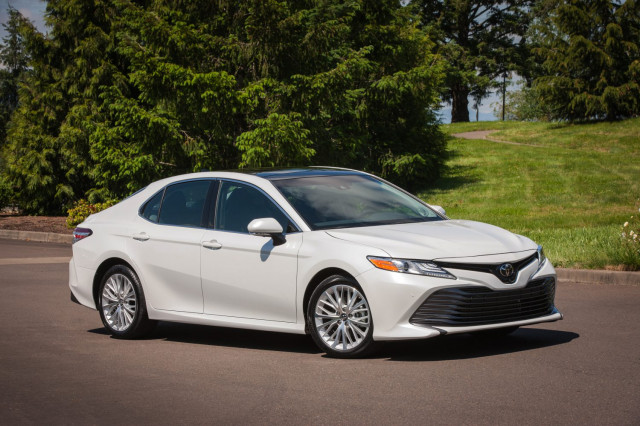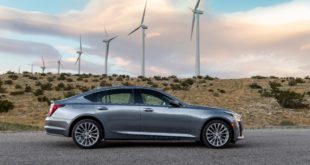The 2020 Nissan Altima and 2020 Toyota Camry are workaday commuters, built to chill—not thrill. As such, the expectations for both mid-size sedans are roughly similar to the same expectations we have for our refrigerators: they’re supposed to run without a problem and deliver us our daily needs.
The Altima and Camry do most of the above, and more. Our TCC Ratings for both show little daylight between the two. The Camry checks in with a 6.8 score, the Altima isn’t far behind with a 6.7. Which one is best for you?
Let’s look at the numbers.
MORE: Read our 2020 Toyota Camry and 2020 Nissan Altima full reviews
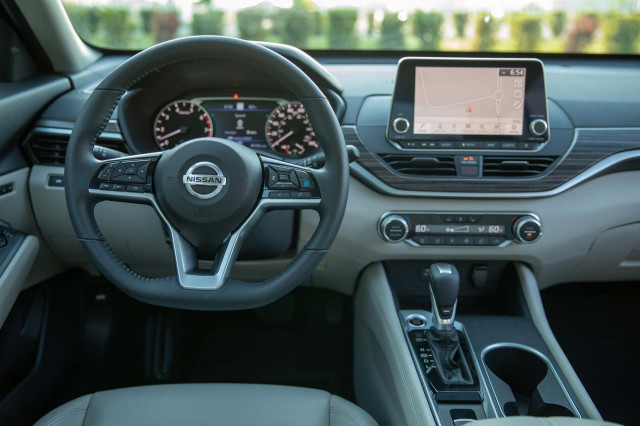
2020 Nissan Altima
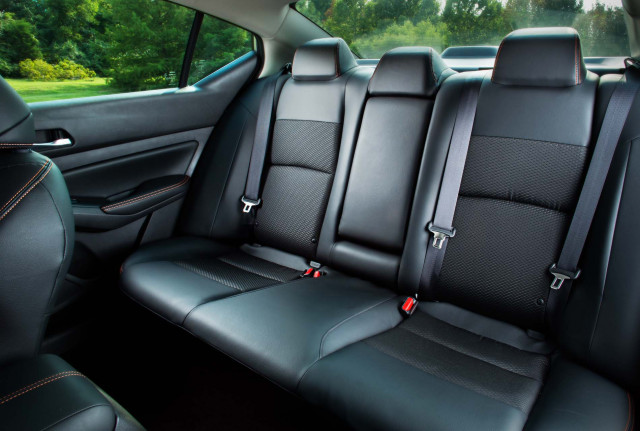
2020 Nissan Altima
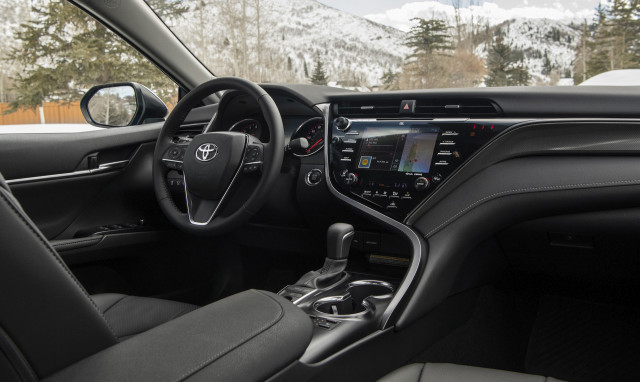
2020 Toyota Camry XSE AWD
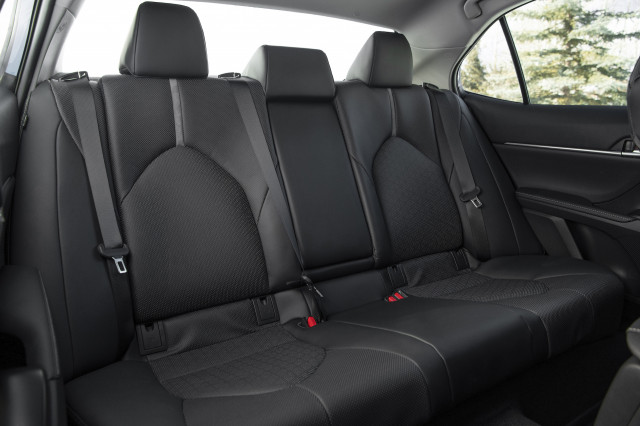
2020 Toyota Camry XSE AWD
The Altima and Camry trade on interior space and comfort. Both easily hold four adults—up to five in a squeeze—and return nearly 40 mpg on the highway in their most popular configurations, according to the EPA.
According to our backsides, the Altima gets the nod in overall seat comfort and space inside. The front seats are all-day comfortable, with enough room for broad Midwestern frames to slide in and out without much issue. The rear seats in the Altima are nearly as good, with almost 36 inches of leg room, and a comfortable seating position that gives long legs plenty of space.
The Camry’s front seats are fine, but the bottom cushions are narrower and the seats aren’t as ergonomically efficient. The Camry’s rear offers 38 inches of rear seat leg room—more than the Altima—but getting into and out of the Toyota is more difficult.
Both sedans sport a 15 cubic foot trunk, which is more than enough space for several suitcases or golf bags. Advantage: Nissan.
Toyota makes up plenty of ground on covering more ground. Although both cars rely on inline-4 power in the majority of models available, the Camry offers hyper-efficient hybrid versions that rate at more than 45 mpg combined, according to the EPA—the base Camry LE even manages 52 mpg combined.
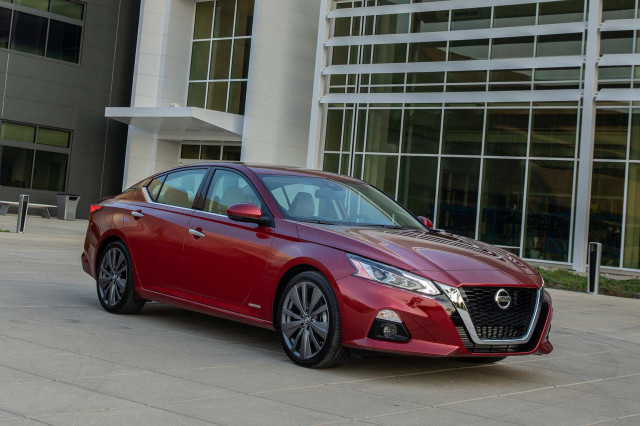
2020 Nissan Altima
That type of fuel-efficiency is stellar, just a few years ago those enviable numbers were attainable only in a Prius—hardly an enviable shape, for some. Now, the Toyota Camry Hybrid puts significant distance between fuel stops in a sedan that attracts less negative attention than the pod-like Prius.

2020 Toyota Camry XSE AWD
Both the Camry and Altima offer all-wheel-drive versions that may serve snow-state buyers just as well as a crossover, although both are suited more for all-weather conditions rather than off-roading. (Eds note: If you take either mud-plugging or rock-crawling, please send pics.) A 301-hp V-6 is available in the Camry, Nissan offers a 2.0-liter turbo-4 that makes 248 hp—they’re both outliers.
Instead, most versions of the Camry and Altima rely on power from 2.5-liter inline-4s from their respective automakers that drive the front wheels only. Toyota plants a 203-hp inline-4 into the snout of its Camry and shifts power through a smooth 8-speed automatic, no complaints there. Similarly, Nissan stuffs a 188-hp inline-4 into the Altima and sends power to the front wheels via a continuously variable automatic transmission (CVT). Nissan’s CVT can be buzzy when pressed hard, even if it helps keep the Altima fuel-efficient.
Both ride and steer relatively effortlessly, although we prefer the cushier rides offered on 17-inch wheels instead of larger, flashier wheels.
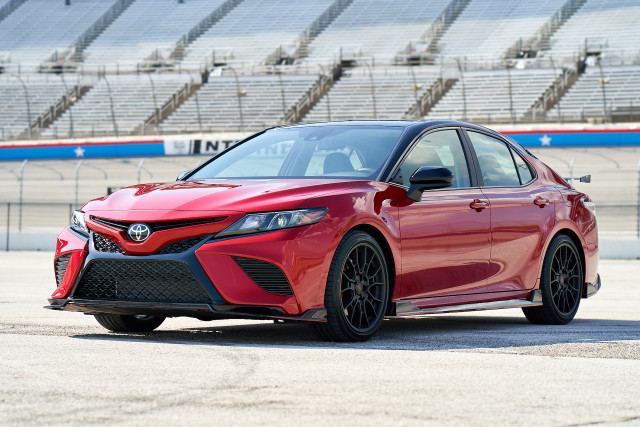
2020 Toyota Camry TRD
The Camry and Altima offer similar standard features inside including automatic emergency braking, a touchscreen for infotainment with Apple CarPlay and Android Auto compatibility, cloth upholstery, and the usual arrangement of power features. The Altima starts for less than $ 25,000, and the Camry starts for just over $ 25,000. The Altima SV is the trim we would recommend and it costs about $ 29,000. It includes upgraded wheels, nicer cloth upholstery, blind-spot monitors, adaptive cruise control, and active lane control.
For about $ 29,200, the Camry Hybrid LE steers in and gives us the best of both worlds. It has similar equipment to the Altima SV, but stretches out a tank of fuel to more than 680 miles, according to the EPA.
The 2020 Camry Hybrid LE is our pick for now, but both are relative values among new cars.
